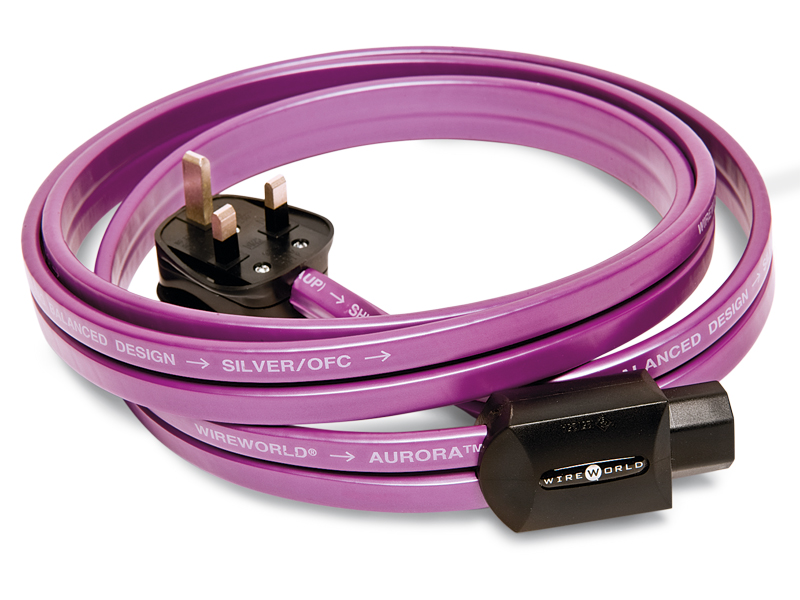TechRadar Verdict
In a basically well-tuned system, this cable can contribute a further level of refinement, thanks to its reduction of noise and grain across the board
Pros
- +
Improved clarity of sound
- +
Numerous other audible improvements across the board
Cons
- -
Steep price
Why you can trust TechRadar
If the price didn't already give it away, a glance soon will: the Wireworld Aurora 52 is not a mains cable for the faint-hearted.
Very nearly an inch wide and distinctly awkward to handle and route, it fairly screams 'specialist'.
We managed to fit it between various source and amplifier components and the mains, though, with care.
As you might guess from the appearance, each phase conductor (live and neutral) is separately insulated and jacketed and each appears to be screened too. Conductors are made of silver-plated copper, while insulation is unspecified.
The IEC connector is Wireworld's own and fits the cable perfectly: the UK plug on the other end has been made to fit surprisingly well.
Plentiful improvements
We were particularly impressed with this cable's contribution to the sound of each of the components we used with it, as it seems to bring with it an unusually wide range of improvements. The commonest mains cable effect, of improved detail, is certainly there, but we also noted additional subjective extension in both bass and treble.
Sign up for breaking news, reviews, opinion, top tech deals, and more.
It's hardly plausible that a mains cable can in any way affect the frequency response of equipment, but by reducing the level of noise in a band it can make detail more apparent and thus seem to extend the frequency range and that ís evidently the case here.
Bass benefits in reach and precision, while treble becomes more crystalline. Stereo imaging also tightens up a little as a side effect of this and the end result is a very attractive net benefit.
